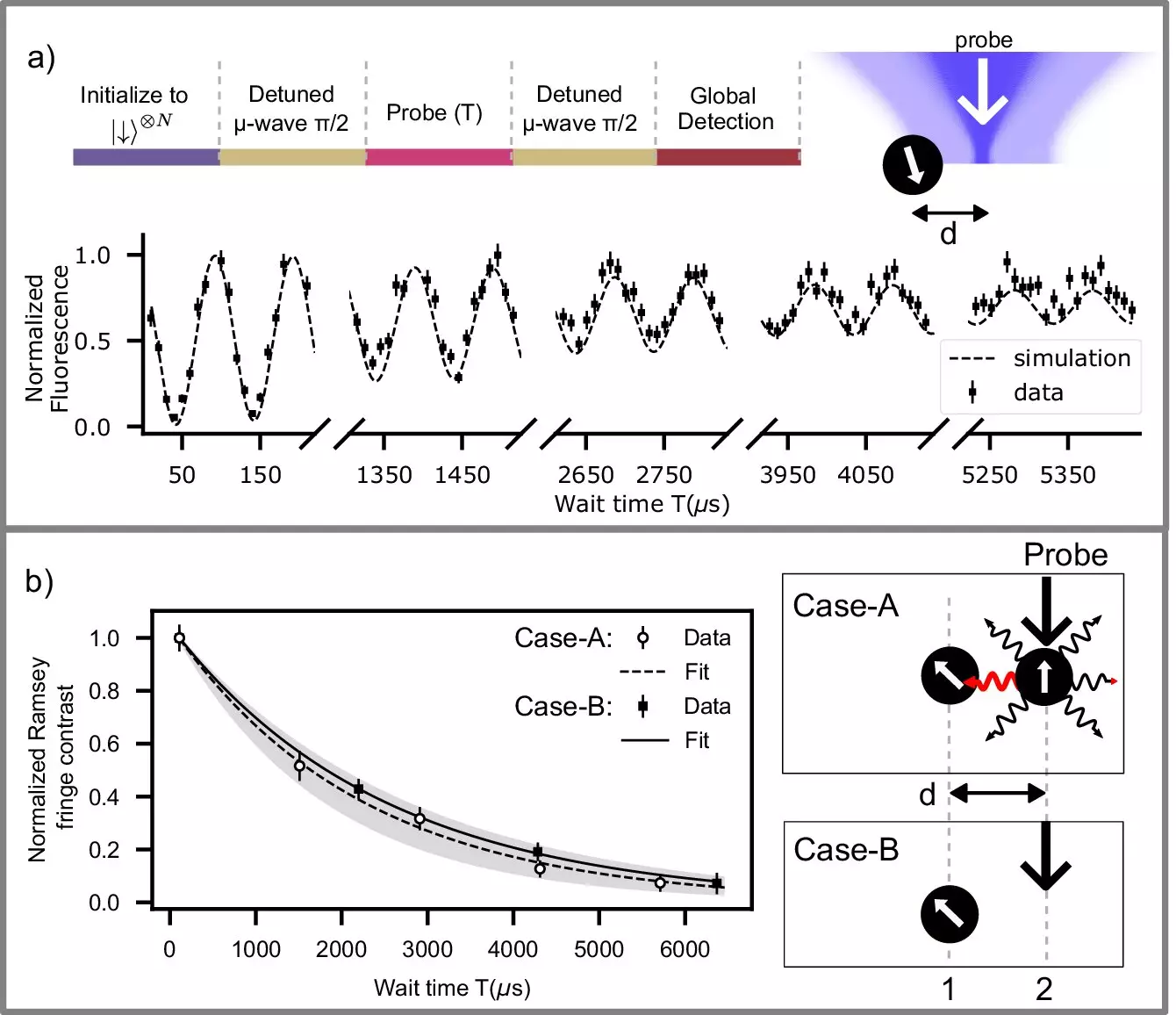Quantum information has emerged as a critical frontier in the realm of modern physics, particularly within the context of quantum computing. However, one of the primary challenges faced by researchers is the inherent fragility of qubits, the basic units of quantum information. Qubits are sensitive to their environment, and external disturbances can lead to the degradation of their information integrity. This necessitates the development of techniques to protect qubits during operations, specifically against the risks posed by accidental measurements or resets of neighboring qubits. Understanding the delicate balance involved in maintaining qubit coherence is paramount for advancing quantum technologies.
Researchers at the University of Waterloo have made significant strides in mitigating the challenges associated with measuring and resetting qubits without impacting their neighbors. Under the guidance of Rajibul Islam, a faculty member at the Institute for Quantum Computing, a research team successfully navigated the complexities of trapping ion qubits. Their innovative method permitted the measurement and reset of a trapped ion qubit to a predetermined state, all while keeping adjacent qubits intact. This breakthrough showcases a remarkable achievement in quantum research, as the distance between qubits involved in this experiment was less than the thickness of a human hair, illustrating the precision required in quantum operations.
Islam and his colleagues’ findings, published in the journal *Nature Communications*, shed light on how this capability could fundamentally reshape future explorations within quantum computing. With enhanced means to protect qubits during critical operations, the research paves the way for optimized quantum processors and accelerates tasks such as quantum simulations. This work is particularly relevant as it lays the groundwork for improved error correction methods that are vital for reliable quantum computing.
Central to their approach was the meticulous control of laser light, an essential component in manipulating qubits. The undertaking was complex due to the proximity of qubits; the scattering of photons during measurement posed a significant risk to nearby qubit states. The research team employed a holographic beam shaping technology that enabled them to direct laser interactions with unprecedented precision. This finely tuned manipulation not only allowed them to measure and reset one qubit without disturbing others but also reduced the potential for crosstalk—interference affecting neighboring qubits.
Motlakunta, a postdoctoral fellow involved in the project, emphasized the importance of controlling light intensity and placement to minimize unwanted disturbances. The group demonstrated that by utilizing holographic techniques, they could achieve over 99.9% fidelity in preserving an “asset” ion-qubit while performing measurements on an adjacent “process” qubit. This high level of fidelity illustrates the promising capabilities of their method, particularly in contexts where precision is critical.
Innovative Methodologies and Future Implications
The research conducted by Islam and his team moves beyond traditional approaches, addressing a long-held skepticism within the field regarding the feasibility of measuring qubits without compromising neighboring states. Previous methodologies often required the physical separation of qubits to safeguard information integrity, introducing delays and complications into experimental designs. The reformative approach taken by this team circumvents those obstacles, demonstrating that a more nuanced understanding of qubit interactions and laser applications can lead to successful outcomes.
Additionally, their findings can be integrated with existing strategies like moving crucial qubits away from operational ones, thereby employing a multi-faceted approach to error reduction. The combination of mid-circuit measurements, laser control, and the potential implementation of various management techniques signifies an evolution in quantum information processing, opening avenues for more sophisticated quantum error correction schemes.
As quantum technology advances towards practical applications, the research conducted at the University of Waterloo represents a crucial leap forward. Achieving high fidelity in qubit measurements while ensuring the integrity of adjacent qubits marks a paradigm shift in quantum information science. This work is poised to not only enhance the efficiency and speed of quantum processors but also to support the broader implementation of error correction and the reliability of quantum systems. Future investigations will likely build upon this research, exploring further enhancements and applications in the ever-expanding landscape of quantum information technology.

